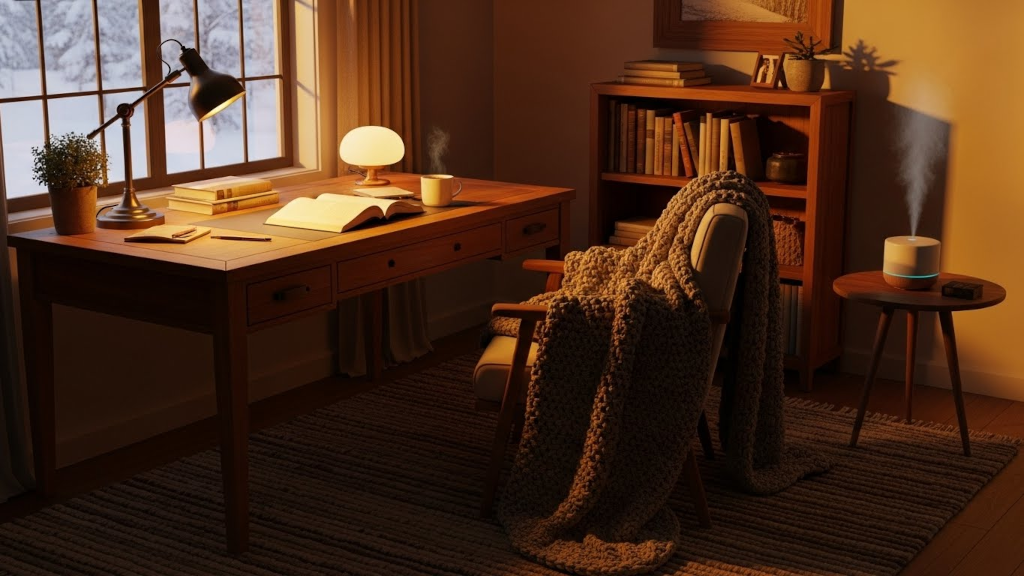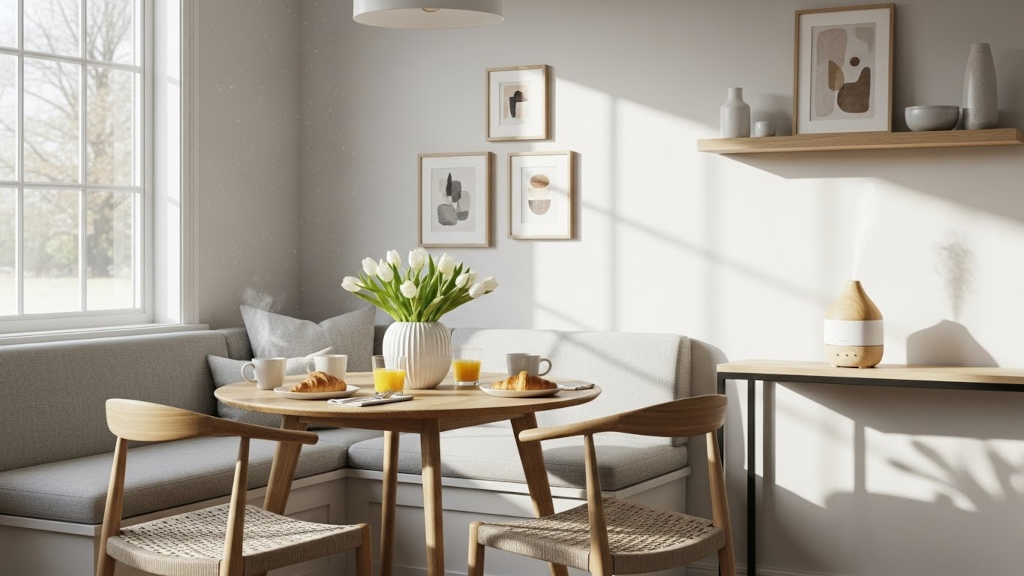Scent has the remarkable ability to shape the feeling of a space. From crisp linens to the warm grain of polished wood, every surface in your home can influence how fragrance is perceived, how long it lingers, and whether it enhances or overwhelms. For those who love home fragrance but are concerned about longevity or clinging, understanding how scent interacts with common materials is essential.
Let’s take a closer look at how fragrance diffuses through fabric, wood, and upholstered surfaces, and how to create a refined, well-scented atmosphere with intention.
The Nature of Fabric and Scent Absorption
Fabrics are among the most scent-friendly materials in your home. They are porous, soft, and naturally absorbent, which makes them excellent at holding onto fragrance. However, not all fabrics behave the same.
Natural fibers like cotton, linen, and wool tend to absorb scent more readily than synthetic materials such as polyester or nylon. These organic fabrics breathe, allowing aroma molecules to settle gently into the fibers. The result is a soft, lasting infusion of scent that subtly enhances the room without overpowering it.
This quality can be both a benefit and a concern. In spaces where scent layering is intentional, such as bedrooms or living areas, fabrics can hold onto refined notes of jasmine, amber, or citrus with a beautiful effect. However, in rooms where odors can linger undesirably, such as kitchens or pet spaces, fabrics can cling to scents longer than you may prefer.
Tips for working with fabric and fragrance:
-
Choose cold air diffusers with precision delivery to avoid oversaturation.
-
Rotate throw pillows, curtains, or blankets periodically to air them out.
-
Use fragrance blends designed for clean diffusion to minimize buildup.
How Wood Interacts with Fragrance
Wood surfaces respond differently to scent. While they are less porous than fabrics, they still absorb scent to some degree, especially unfinished or lightly sealed wood. The way wood holds scent depends on its density, finish, and exposure.
Light woods like pine or cedar can emit their natural aroma and will often mingle with whatever scent is introduced nearby. When a diffuser emits a woody blend, such as amberwood or fir resin, it can beautifully complement the natural tones already present in the furniture or trim.
Heavily lacquered or varnished wood, such as high-gloss floors or cabinetry, tends to repel scent molecules more easily. In these cases, the fragrance will hover in the air around the wood, not within it. This is ideal for homeowners who want clean transitions between rooms or who enjoy distinct fragrance zones in the home.
The natural grain of wood also affects how scent behaves. Intricate textures catch more air and particles, allowing for a slightly deeper interaction than ultra-smooth finishes.
Best practices for wooden spaces:
-
Use scent diffusers in open shelving or near wooden beams to let the aroma circulate freely.
-
Avoid placing diffusers directly on wood to prevent residue or saturation.
-
Choose complementary scents such as musk, amber, or cedar to harmonize with natural wood tones.
Upholstery and the Art of Layered Scent
Upholstered furniture often blends both wood and fabric, making it one of the most complex surfaces for scent interaction. Sofas, armchairs, and ottomans naturally collect airborne fragrance, especially in closed environments.
Velvet, chenille, and thick weaves hold scent well and release it slowly over time. This creates a cocooning effect, where fragrance becomes part of the room’s atmosphere without a strong point of origin. If you are using a cold air diffuser in a room with heavy upholstery, the space may seem more richly scented, yet also more enveloping.

The concern some have is that fragrance may "cling" too long, especially in homes with pets, children, or cooking odors. The solution is not to avoid scent entirely, but to control its delivery.
How to manage fragrance in upholstered rooms:
-
Choose cold air diffusion over sprays to prevent direct contact with surfaces.
-
Ventilate the room occasionally to refresh the air cycle.
-
Use scent profiles that are soft and balanced, like water lily, white musk, or citrus zest.
Fragrance That Moves with Intention
Scent does not stay still. It rises, drifts, settles, and often takes cues from the materials it interacts with. A wooden tray, a linen curtain, or a velvet cushion can all become part of the fragrance journey in your home. By understanding how these materials respond, you can guide the scent experience with more control and artistry.
Rather than fearing clinging or overwhelming strength, thoughtful use of scent creates a kind of quiet continuity. It’s about layering intentionally, refreshing gently, and choosing oils that are formulated to breathe with the space.
Our curated fragrance line was developed with these surfaces in mind. Whether you are placing a diffuser on a bookshelf, next to a velvet throw, or in a hallway lined with framed woodwork, each blend is designed to diffuse cleanly, elegantly, and with just the right amount of presence.
When Fragrance Becomes Part of the Home
A well-scented home does not announce itself with intensity, but one that reveals itself gradually. Like lighting, texture, and color, scent becomes part of the overall aesthetic. It engages not just the nose, but the memory and emotion. When diffused with care, a fragrance becomes inseparable from the moment.
Whether you want your space to feel grounded, airy, or serene, understanding the interplay between scent and surface lets you create it intentionally. And once that harmony is established, every room becomes more than a space, it becomes an atmosphere.








